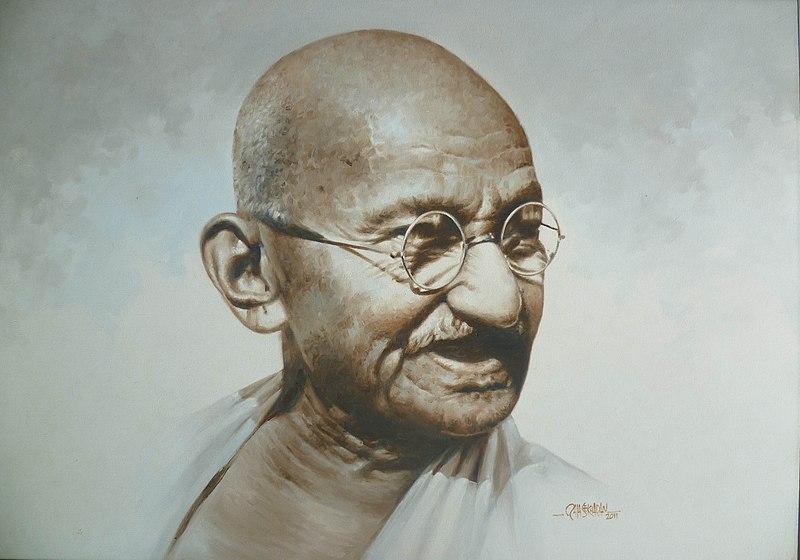The Iconic Mahatma: Gandhi’s Presence on India’s currency note

Gandhi Jayanti, celebrated worldwide on October 2nd, is a significant occasion that marks the birth anniversary of Mohandas Karamchand Gandhi, an iconic figure in India’s struggle for freedom.
Known as the Mahatma, a title bestowed upon him by Nobel laureate Rabindranath Tagore, Gandhi was not only a politician, social activist, and lawyer but also the driving force behind India’s attainment of independence in 1947.
The selection of Mahatma Gandhi’s image for India’s currency notes reflects his immense influence and appeal.
In 1996, the Reserve Bank of India (RBI) introduced the Mahatma Gandhi Series of banknotes, replacing the earlier Ashoka Pillar notes.
A commemorative ₹100 note featuring Gandhi seated in front of the Sevagram Ashram was issued in 1969. Also, it was in October 1987 that the iconic smiling Gandhi began to grace ₹500 currency notes.
Since then, his portrait has become a regular feature on notes of various denominations.
Interestingly, the image of Gandhi that adorns the banknotes is not a mere caricature.
It is a meticulously chosen cutout from a 1946 photograph where Gandhi is pictured alongside British statesman Lord Frederick William Pethick-Lawrence.
This specific image was selected because it beautifully captures Gandhi’s smile, making it a mirror image of the cutout.
In 2016, the RBI introduced the Mahatma Gandhi New Series of banknotes, incorporating advanced security features.
Additionally, the back of these notes now showcases not only Gandhi’s image but also the logo of the Swachh Bharat Abhiyan, further emphasizing his commitment to cleanliness and hygiene.
Here are some lesser-known facts about Mahatma Gandhi:
- Despite being nominated five times, Gandhi never received the Nobel Peace Prize.
- Gandhi’s nomination for the Nobel Peace Prize occurred on five separate occasions.
- In 2007, the United Nations designated October 2nd, Gandhi’s birthday, as the International Day of Non-violence.
- Tragically, Gandhi was assassinated in the garden of the former Birla House.
- He was honoured as the Time Magazine Man of the Year in 1930.
- Remarkably, Great Britain, the very nation against which he fought for India’s independence, issued a postage stamp in his honour 21 years after his death.
Gandhi’s enduring legacy continues to inspire the world, not only through the currency notes bearing his image but also through his unwavering commitment to non-violence, peace, and justice.
Image Credit: Rajasekharan Parameswaran, CC BY-SA 4.0, via Wikimedia Commons
You may also like
Image Reference: https://commons.wikimedia.org/wiki/File:Gandhiji-oil_painting.jpg
Recent Posts
- Bihar youth builds electric jeep that runs 100 km on a single chargeMurshid previously worked at different mechanic shops after completing his education.
- Delhi’s EV policy 2.0: Incentives, bans & a push for cleaner mobilityThis incentive is meant to encourage people to retrofit existing vehicles instead of scrapping them.
- Books without barriersSakthivel’s mission extends beyond mere convenience.
- Bihar youth builds electric jeep that runs 100 km on a single charge
What’s new at WeRIndia.com
News from 700+ sources
-
Goa duo to lead Indias SAFF Futsal
-
Teachers Call Parliament March over TET Exemption, Pension Reforms
-
Dinakar Defends APs Right to Surplus River Waters
-
CM Omar warns of long-term cost as Vaishno Devi medical college shut
-
CDC updates childhood vaccine schedule: 5 Key things parents need to know
-
BJP, protest groups welcome recognition withdrawal; NC, PDP, Cong oppose move
-
WeRIndia – A News Aggregator
Visit werindia.com for all types of National | Business | World | Politics | Entertainment | Health related news and much more..










Leave a Reply